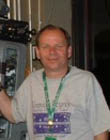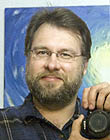|
|
This topic comprises 2 pages: 1 2
|
|
Author
|
Topic: What are the fundamental differences between 35mm Century projectors?
|
|
|
|
|
|
|
|
|
|
|
Jim Cassedy
Phenomenal Film Handler

Posts: 1661
From: San Francisco, CA
Registered: Dec 2006
|
 posted 11-13-2013 12:42 PM
posted 11-13-2013 12:42 PM




In Y2K7, there was a thread with a lot of Century projector info.
I was unable to find the original thread, but I had saved some of the info
on it in my "Century Projector" file on my computerthingy.
Below is a copy of what I've got.
Sorry I can't give direct credit to whoever originally compiled the info:
"DECODING CENTURY MODEL NUMBERS"
"M" always means direct drive.
"W" always means water cooling
"D" means drive in machine (2 shutter blades)
"SA" is the basic machine ("DA" the drive in model)
R3 is the basic soundhead model
MR3 is the drive model
Century nomenclature:
Base projector models: A, C, H, J
Variations of the "A" model:
S=Single shutter
D=Double shutter
W=Water-cooled aperture
TA=turret and aperture changer
Double shutters are denoted in the C, H, and J models by double letters (e..g., CC, HH, JJ).
No special designation for water-cooling (although, I have seen a handful marked, "CCW").
Reproducers (R=reproducer), most-common base models: 3,4,5
R3=foward scan
R4=reverse scan (many were converted to fwd scan in the field, as Sam said)
R5=forward scan, paired with JJ projector
T=transistorized
M=Direct Drive
"E" was FET (I'm pretty sure),
B = Blower (Cinefocus) and the R50 was paired with the JJ not the R5.
I've also seen an R20 paired with a JJ in a Standard-Drive configuration.
| IP: Logged
|
|
Steve Guttag
We forgot the crackers Gromit!!!

Posts: 12814
From: Annapolis, MD
Registered: Dec 1999
|
 posted 11-13-2013 12:45 PM
posted 11-13-2013 12:45 PM




Yeah, Century screwed up with the naming. Traditional Century was that the letter denoted the model...if the letter was doubled, that denoted double-shutter. Hence CC, HH and JJ are all double shutters.
The "modern" 35mm projector should have gone by "A" and "AA" but alas those names were taken a few times over...so the SA and DA came into being. In theory, adding an "M" to a name makes it direct drive. So an MSA is a direct-drive single shutter "A". But note that a JJ never got an M prefix for being a direct drive (which most, but not all, were). However, the JJ did get the silly name of JJ2-S (or JJ3-S for Cinefocus) for single shutter. It should have just been called the J2 and would have meant the same thing.
Strong ended the line calling the "MSA" the MSC...direct drive, single shutter, "C" but not the vintage "C" Heaven knows why it needed the model change...it was identical to the A but missing parts...like the shutter adjustment, fire shutter...etc.
| IP: Logged
|
|
|
|
|
|
|
|
|
|
|
|
|
|
|
|
|
|
|
|
All times are Central (GMT -6:00)
|
This topic comprises 2 pages: 1 2
|
Powered by Infopop Corporation
UBB.classicTM
6.3.1.2
The Film-Tech Forums are designed for various members related to the cinema industry to express their opinions, viewpoints and testimonials on various products, services and events based upon speculation, personal knowledge and factual information through use, therefore all views represented here allow no liability upon the publishers of this web site and the owners of said views assume no liability for any ill will resulting from these postings. The posts made here are for educational as well as entertainment purposes and as such anyone viewing this portion of the website must accept these views as statements of the author of that opinion
and agrees to release the authors from any and all liability.
|

 Home
Home
 Products
Products
 Store
Store
 Forum
Forum
 Warehouse
Warehouse
 Contact Us
Contact Us




 Printer-friendly view of this topic
Printer-friendly view of this topic

















